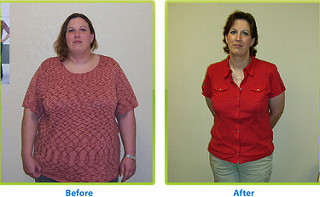The SMART Goal Setting Guide
The start of the New Year has already passed and some of us may already be failing on our health resolutions. Sometimes though failing can be important. It can be seen as an opportunity to pick yourself back up and get started again. Also, it may be that the resolutions you made were unrealistic or not specific enough. If you merely told yourself that you would exercise more in the coming year without specifying where, when, how, etc., than you may have already set yourself up for disaster before you’d even begun.
There are however ways to improve your chances of keeping to your goals. Making sure that they are smart goals can be the most important first step. SMART is an acronym used to help people think about how they set their goals. Smart goals should therefore be: specific, measurable, attainable, realistic and timely. So taking exercise as our example, in making a goal to do with this, following the above suggestions will help you reach your fitness goals.
So let’s start with getting specific. If you want to exercise more, than you need to ask yourself how you are going to make this happen. Thinking about this is a very important factor in realizing your goals. So how will you exercise more? How will you fit this into your busy schedule? Is there a time that you can have someone watch your kids? Can you go after work or before work? All of these questions are important to ensuring you know how to accomplish this goal.
Another component of getting specific with the goals are involves the ‘what’ and ‘why’ aspects. What exercise are you going to be doing, specifically? Will you be going to a gym or exercising outside? Will you be joining a class or sports team? Will you be exercising with a buddy or going it alone? With regards to the ‘why’ aspect this can be a bit trickier, but it is essential to remember why you want to achieve this specific goal. For instance, you might want to write out a list of reasons for why you want to get more fit. Perhaps, you want to be able to climb that flight of stairs without huffing and puffing; perhaps you want to fit into that gorgeous dress you bought last year; or perhaps you simply want to feel stronger and healthier. Whatever it is making sure that you think about your reasons for this specific goal will help you remember why you’re spending that extra twenty minutes on the Stairmaster.
Next in our five part goal setting steps, is the M, which stands for measurable. You need to make sure that your goal is measurable and this is what will make it manageable and achievable. So, instead of just resolving to ‘exercise more’, you should think of what this means. How will you know when you’ve achieved your goal? Perhaps, it might be when you can pump that extra ten pounds. Perhaps, it will be once you fit into your old jeans without bursting out at the seams. Whatever it is, make sure that you can measure it. Otherwise you will perpetually feel disappointed. It’s not that you’ll reach this goal and then stop achieving things, but rather you’ll reach this goal, feel inspired by your success and start planning your next one.
The next letter on our list is ‘A’ which stands for attainable. This is one of the most important aspects of any goal setting process. If you can’t possibly achieve what you’ve set out to do, then inevitably you will set yourself up for failure. If you say, for instance, that you want to lose fifty pounds in two months, this might be a little unrealistic. If, however, you have planned out your diet for the next month and have calculated the amount of calories you will be ingesting per day and the amount of exercise you will be doing, you will then be able to realistically calculate your average weight loss. This is much more realistic than setting out lofty goals with no specific ways of achieving them. All of the parts of the puzzle have to go together when setting longer term goals especially.
After making sure that the goal is attainable, the next step is to make sure that it is realistic. This is obviously related to its attainability. In this case, though you want to think about what is realistically attainable for you in the next month or three months. If in doubt, talk to friends, family and/or your physician to help you get an idea of what kind of progress you can expect. Contact others or join an online group of people trying to do the same thing as you. This way you can get a good estimate of what can be expected in terms of fitness and weight loss given your planned steps.
It is really important that you are honest with yourself here. Make sure to be realistic with yourself about limitations as well. If, for instance, you know that you will be away for a week or two for business, then be realistic about how you will continue with your weight loss and fitness goals over that time. It may be that you will be so busy that the most you can do is hold steady with your weight loss. This can be a real feat in and of itself when you are ordering out, or ordering in at hotels, and/or having a host of business lunches at restaurants. Whatever the case just make sure to take into account the instances that might be difficult to deal with. By being realistic here you also have a better chance of dealing with the situations and planning for them. This can truly make all the difference. By being aware of these tough times and planning for them, you won’t feel so disappointed if you plateau a little during this time. As such, you won’t get as frustrated and decide to quit.
Finally, the last aspect of goal setting involves the timely nature of it all. SMART goals mean goals that can be measured by a specific time. By setting a time frame you know that you have to get started right away. If you leave out a specific time than goals can be too vague and you can lack the commitment it takes to get started. Instead, set a specific time to achieve the goal. Again, taking exercise as our example, say to yourself what exactly the achievement will look like at a given time. If you are just starting out at the gym and are hoping to improve your cardiovascular health for instance, you might say that you want to be able to run for twenty minutes on the treadmill in one month’s time. This is specific enough to be measured at that time. Alternatively, perhaps you’d like to run that marathon that takes place in three months. In this case, you might want to break down your training into month long intervals so that in one month you can run a certain distance in a certain amount of time, in two months you can up that time to this amount and by three months be able to run that marathon in this specific amount of time.
As you can see, whatever your goal is there are a number of ways that you can help yourself achieve it. While setting new goals can be difficult in that you have to take charge and make the changes in your life. This requires drive, bravery and motivation. On top of all this, you also need to consider all of the above questions. While this can take a little bit of time at the beginning, it is honestly well worth it in the end. Especially if it means that you push through and get that pat on the back at the end. As the old saying goes if you fail to plan you plan to fail. Taking the time to answer these questions above and make our goals as SMART as possible can make all the difference between being where you are right now in three months or being where you want to be. Get SMART now and start making your resolutions work for you today.
-
Does Canadas Health Care System Cover Weight Loss Surgery?
In recent years, provincial governments across Canada have recognized
-
Lose as Much Weight as Possible Without Going to a Gym.
Making the decision of where you will go
-
Weight Loss Criticism – How To Deal With Criticism From Others
One of the problems plus-sized women run up against is
-
You Do Need to Exercise for Weight Loss
Doing regular physical exercise is the very best method of remaining f
-
Is Spot reduction a Truth or Myth?
Can we really reduce fat from specific area? The most common request
-
Five Habits That Can Contribute To Being Overweight
Is your lifestyle contributing to your weight gain? For healthy pe
- DON'T MISS
- Weight Loss Programs A Real Paradigm Shift
- What To Expect At Any Biggest Loser Weight Loss Program
- Top 5 Surprising Benefits of Cla (Conjugated Linoleic Acid)
- 10 One-minute weight loss secrets
- A Diabetics Diet Is Healthy And Tasty
- Cholecystitis (gallbladder inflammation): Causes, types and treatment
- Image Consultants Can Help You Look Slimmer Instantly
- Modern Intestinal Weight Loss Surgery
- Review Of The Sensa Weight Loss System
- Four Common Mistakes That Overweight People Make




